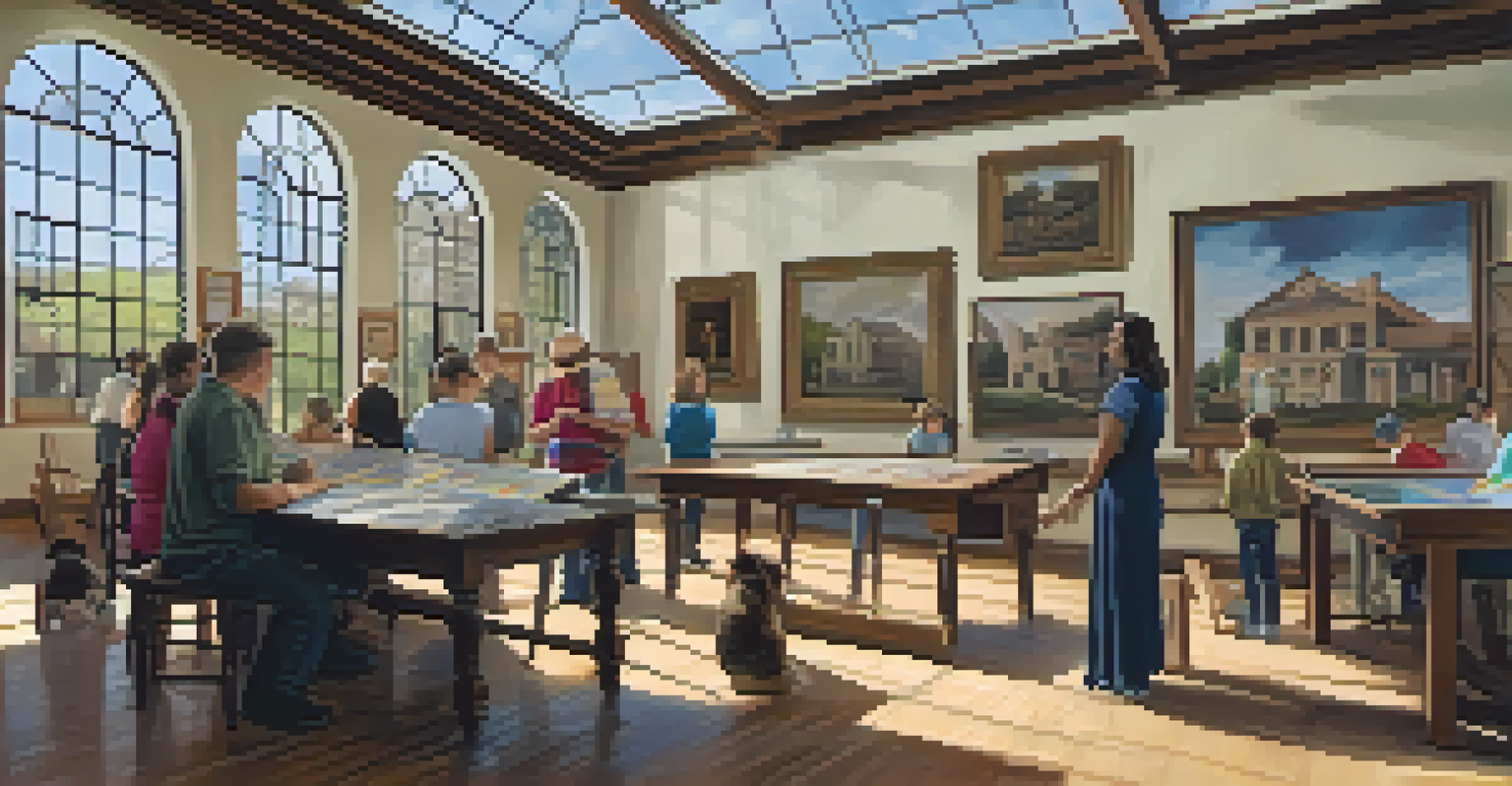The Impact of Tourism on San Diego's Historic Sites

Tourism's Role in Preserving Historic Sites
Tourism plays a crucial role in the preservation of San Diego's historic sites. As visitors flock to these locations, they bring in revenue that can be allocated toward maintenance and restoration efforts. For example, the Cabrillo National Monument benefits from entrance fees that directly support its upkeep.
Tourism can be a powerful force for preservation, but it must be managed wisely to protect the very treasures that attract visitors.
In addition, the increased foot traffic helps raise awareness about the importance of these sites. When people learn about the rich history behind places like Old Town San Diego, they become advocates for their preservation. This sense of stewardship can lead to community involvement and volunteer opportunities, further ensuring these sites are maintained for future generations.
However, there's a balancing act to be mindful of. While tourism can provide necessary funds, it can also lead to wear and tear on these historic locations. Finding a sustainable approach that benefits both the sites and the visitors is essential.
Economic Benefits of Tourism to Historic Sites
The economic impact of tourism on historic sites in San Diego is significant. Visitors spend money not only on entrance fees but also in local shops, restaurants, and hotels. This influx of cash can breathe new life into neighborhoods surrounding these historic areas, creating jobs and boosting the local economy.

For instance, the Gaslamp Quarter, with its vibrant blend of history and modern attractions, thrives on the tourism generated by its historic charm. The funds generated help support local businesses, which in turn can invest in their own renovations and community projects, creating a positive feedback loop.
Tourism Fuels Historic Site Preservation
Visitor spending supports maintenance and restoration efforts for San Diego's historic sites.
Moreover, events centered around these historic sites, such as festivals or reenactments, draw even larger crowds. This not only enhances the visitor experience but also provides additional revenue streams for both the sites and the local economy.
Challenges Facing Historic Sites Due to Tourism
While tourism offers many benefits, it can also present challenges for San Diego's historic sites. Overcrowding is a common issue, especially during peak seasons, which can detract from the visitor experience and put strain on the infrastructure. Places like Balboa Park can become overwhelmed, leading to concerns about preservation and visitor safety.
Historic preservation is not just about protecting old buildings, but about preserving the stories and memories that make our communities unique.
Additionally, the commercialization of historic sites can dilute their authenticity. When local businesses prioritize profit over heritage, it can lead to a loss of the unique charm that draws visitors in the first place. It's essential that stakeholders prioritize the preservation of the site's historical integrity.
Furthermore, noise and environmental impacts from large tourist groups can disrupt both wildlife and local communities. Finding ways to manage visitor numbers and maintain the delicate balance between enjoyment and preservation is crucial.
Community Engagement in Historic Preservation
Community engagement is vital for the preservation of historic sites in San Diego. Local residents often have a deep connection to these landmarks and can provide invaluable insight into their significance. By involving the community in preservation efforts, it fosters a sense of ownership and shared responsibility.
Many organizations host events that encourage local participation, such as clean-up days or educational workshops. These initiatives not only help maintain the sites but also strengthen community bonds. When residents are actively involved, they are more likely to advocate for the protection of these treasures.
Economic Boost from Local Tourism
Tourism enhances local economies by driving revenue to businesses near historic attractions.
Moreover, involving the community in decision-making processes ensures that the voices of those who live near historic sites are heard. This collaborative approach can lead to more sustainable tourism practices that benefit both visitors and locals.
Education Through Tourism at Historic Sites
Tourism provides a unique educational opportunity at San Diego's historic sites. Visitors can learn about the city's rich history through guided tours, interpretive signage, and interactive exhibits. For example, the Maritime Museum offers insights into the naval history that shaped the region.
This educational aspect is not only beneficial to tourists but also enriches the community. Local schools often partner with these sites to provide students with hands-on learning experiences, fostering a sense of pride in their heritage. When students engage with history in meaningful ways, it helps ignite a passion for preservation.
Furthermore, educational programs can be tailored to different age groups and interests, ensuring that the history is accessible to everyone. Empowering visitors with knowledge encourages them to become advocates for preserving these sites.
Sustainability Practices in Tourism and Preservation
Sustainability is an increasingly important focus in tourism, especially when it comes to preserving historic sites. Practices such as limiting visitor numbers, promoting eco-friendly transportation, and using sustainable materials for restorations can significantly reduce the environmental impact. For instance, many sites are now adopting green building practices to maintain their historical integrity while being kind to the planet.
Furthermore, educating tourists about sustainable practices can enhance their experience. Simple actions, like carrying reusable water bottles or respecting wildlife, can make a big difference. When visitors understand their role in conservation, they are more likely to leave a positive impact.
Community Engagement is Crucial
Involving local residents in preservation efforts fosters a sense of ownership and responsibility.
Incorporating sustainability not only benefits the environment but also helps secure the future of these historic sites. By prioritizing eco-friendly tourism, we can ensure that these treasures are preserved for generations to come.
Future of San Diego's Historic Sites in the Face of Tourism
The future of San Diego's historic sites hinges on finding a balance between tourism and preservation. As the city continues to attract visitors, it will be essential to implement strategies that protect these landmarks while still providing enjoyable experiences. Collaborations between local governments, businesses, and community organizations can pave the way for sustainable tourism initiatives.
Technology also plays a role in shaping the future of tourism at historic sites. Virtual tours and augmented reality experiences can offer engaging alternatives for those who may not be able to visit in person, reducing physical foot traffic while still educating and entertaining.

Ultimately, the key lies in creating a shared vision for the future that honors both the past and the present. By prioritizing preservation and community engagement, San Diego can continue to celebrate its history while welcoming the world.